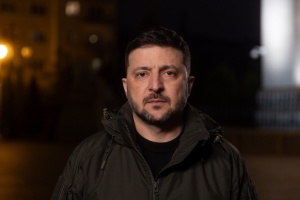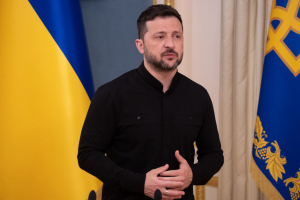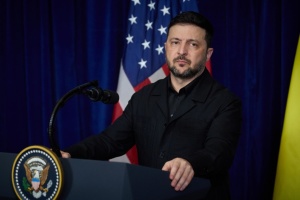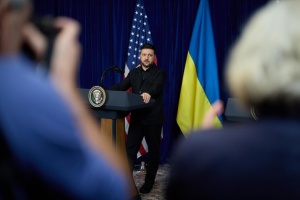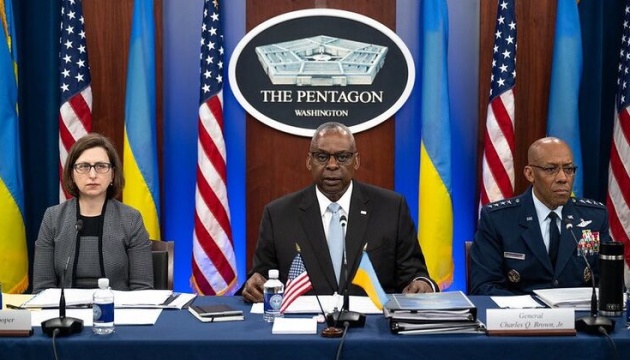
22nd Ramstein Format meeting were deliberating on lifting a ban on Ukraine’s use of Western-supplied arms against targets inside Russia
On May 20, the Ukraine Defense Contact Group (aka Ramstein Format) came together for its 22nd meeting. Held online, the meeting brought together defense ministers and officials from over 50 countries. As has become a tradition now, the meeting will likely approve a new military aid package for Ukraine, and Ukrainians are keen to see what will be within it. But more about this later. It should be noted, however, that one should not expect any sensations from the Ramstein Format that has already entered into its third year of existence. This format has long gone into the mode of meticulous, routine work. The partners are not expected to offer Ukraine anything new from the range of the weapons types they had provided previously. The maximum they can offer will likely be new brands of the same weapons types. For example, even if transfers of the French Mirage 2000 or Rafale, or, say, the Swedish Gripen fighter aircraft are announced, this, indeed, will be a significant addition to Ukraine’s military aviation capability, but still they all are the fighters of the same class that have already been agreed for delivery to Ukraine (American F-16s).
Now it's not just weapons deliveries, but also safe logistics and the speed of delivery that begin to come to the fore. The need for more speedy deliveries was emphasized, in particular, by Ukraine’s Ambassador to the USA, Oksana Markarova. In a live interview to the CBS broadcater the day before the May 20 Ramstein gathering, she called on the American leaders to speed up the supply of weapons: "There is no such thing as fast enough where we are dealing with an enemy like Russia, and we must catch up what hasn’t been supplied due to a long pause in deliveries. We need it to be faster."
Finally, in this context it would be appropriate to make a mention of the background against which the meeting was held. This is about the escalation of hostilities outside of the Kharkiv City, which could have been avoided. How? The answer is simple: with a sufficient amount of American HIMARS missile launchers and ammunition, Ukraine’s Armed Forces could have halted the enemy assault even before it actually began. The Russians, who were concentrating troops and equipment in their areas bordering Ukraine, were doing so safely and with impunity, knowing that the US has banned Ukraine from using their supplied weapons against targets on Russia’s sovereign territory.
There are no such bans imposed by the government of Great Britain, and discussions on removing a ban on the use of French supplied weapons on Russian soil have been going on in the French parliament. Authorities in Kyiv have requested President Joe Biden to greenlight attacks with American supplied weapons on targets inside Russia, at least in the areas immediately bordering on Ukraine. To add to this, it has become known that this issue had been discussed at the level of the defense ministers of Ukraine and the USA - Rustem Umerov and Lloyd Austin -- just on the eve of the 22nd Ramstein meeting.
Let's say one thing: the history of wars does not know such precedents. So what’s the chances that the partners’ stance/policy regarding the use of their supplied armaments will change at last?
EXPERTS: "AT RAMSTEIN, A PERMISSION FOR UKRAINE TO USE WESTERN-SUPPLIED WEAPONS AGAINST TARGETS INDIDE RUSSIA WAS ON THE TABLE, THAT’S FOR SURE"
This opinion was expressed, in a comment to Ukrinform, by Oleksandr Kovalenko, a columnist with the "Information Resistance" group, as well as by Oleksandr Musienko, director of the Center for Military and Legal Stidues.
They believe that it was the situation that arose in Kharkiv Oblast that had created a new agenda for the 22nd meeting of the Ukraine Defense Contact Group.
"I am a hundred percent sure that the issue of lifting the ban on Ukraine’s use of [Western-supplied] weapons against targets on the sovereign territory of the Russian Federation was discussed at this Ramstein meeting. And it will be discussed further during the meetings that will follow. That is what our state really needs now," Oleksandr Kovalenko said.
In his opinion, one can constantly claim that Ukraine is fully in its right, moral as well as legal, to attack targets on Russia’s territory using Western-supplied weapons, but there is one BUT...
"Let's do without any of philosophal underpinnings and demagoguery, but look at the issue from a practical perspective. The Russian barrel artillery can reach targets out to 15 km on average, and MLRS [multiple launch rocket systems] can reach ranges of 30 to 35 kilometers. Compare this to their Western-made counterparts that are capable of ranges of 30 km for barrel artillery and 70 km for MLRS. The ranges reacheable by Russian and Western glide boms are approximately the same - 40-50 km, but the unique Ground Launched Small Diameter Bomb (GLSDB) is capable of even longer ranges. And now I will explain on the fingers. In hostilities currently being waged primarily in Kharkiv Oblast, Russian offensive operations are supported by artillery guns operated from inside Russia – more specifically, the areas of Lozovoye and Novaya Tavolzhanka. There is a distance of 15 km from Lozovoye to [Ukraine’s] Lyptsi, and 10 km from Novaya Tavolzhanka to Vovchansk. The enemy has no need to deploy its artillery guns immediately in Kharkiv Oblast, as it is perfectly capable of reaching from its own territory all the destinations along the key axes of their operations," the expert says.
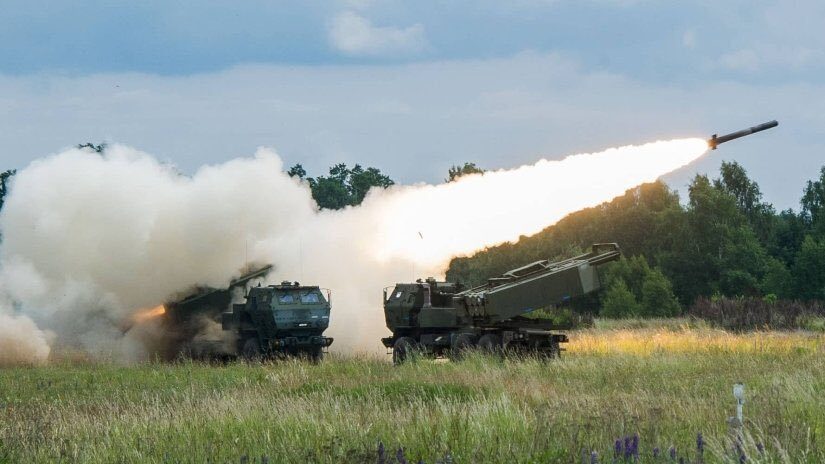
The lifting of the ban for Ukraine to use Western-supplied arms against targets inside Russia was on the agenda for the 22nd Ramstein Format meeting among other issues. And it will be discussed further during the meetings that will follow
We, for our part, are prohibited from using, say, M777 howitzers against targets located in Russian territory, in Lozovoye. We cannot either target the locations of the enemy's reserves with the M142 [High Mobility Artillery Rocket System, the HIMARS]. We cannot bombard any of the targets located in Russia’s Belgorod Oblast using high-precision glide bombs, and this at the time where the occupying forces are wiping Vovchansk off the face of the earth with their anti-aircraft missiles.
"Therefore, the question is not so much about the moral law and legality of such actions, but about practicality. After all, yes, even after our win, we can be shelled with impunity from the other side of the border for a whole 100 years or longer. The situation with restrictions imposed on the use of donated weapons is unparalleled in the global war history.
"Nothing of the kind has ever happened before. At least, I personally cannot recall even a single such precedent," says Oleksandr Kovalenko.
Oleksandr Musienko, for his part, is convinced that sooner than the end of the year, an arrangement will be found to enable Ukraine to use the weapons donated by its partners for engaging targets on Russian soil.
The military expert reminds that Ukraine has already effectively engaged strategic targets inside Russia, including, in particular, the seaport of Novorossiysk. "Oil products originating in Kazakhstan and Azerbaijan, as well as in Russia itself, go through this seaport. Strikes like these are not making Russia a very reliable partner. I can state that Ukraine has entered a new phase of the war as it is expanding the geographical reach of its weapons, and, I think, that was the latest but not the last attack on this seaport target."
Finally, Mr. Musienko reminded that there has been talk already about sending troops from NATO countries to Ukraine. "We are already moving towards another phase where troops from NATO countries will be dispatched to Ukraine. Now we are talking about military inspectors. But I’m expecting that we are in for some serious changes that may take place by the end of this year”.
OUTCOME AND RESULTS OF RAMSTEIN-22 AS PER RUSTEM UMEROV
First of all, the Ukrainian Minister of Defense, Rustem Umerov emphasized that, over the time that has passed since the previous Ramstein meeting, the enemy has become significantly more aggressive, seeking to stretch the Ukrainian defense lines all along the 1,200-kilometer frontline, particularly by expanding the area of its offensive operations to include Kharkiv Oblast.
"We are holding back this offensive; we are replenishing operational combat units and organizing new brigades," Mr. Umerov said.
Ukraine's first priority need are heavy weapons: tanks, armored personnel carriers, howitzers. This is exactly what was discussed at Ramstein-22.
"Ukraine continues to courageously resist Russian aggression. Thanks to the updated mobilization plan, the Reserve+ application for draft-liable persons was launched this Saturday, [May 18], which has already been used by more than 600,000 Ukrainians. Our recruiting centers provide an opportunity for an engineer to remain an engineer, a driver to remain a driver, an IT specialist to remain an IT specialist, even in the army, fulfilling his duty to the Homeland. Joined with our partners, we are improving opportunities for training new recruits," the Defense Minister went on to note.
Rustem Umerov also reminded partners that Russia’s massive missile strikes have seriously aggravated the situation in the Ukrainian energy sector. These strikes also pose a potential danger to neighboring countries.
"Therefore, medium and long-range air defense capabilities are our urgent need. We are grateful to our partners for their invaluable aid. It’s vital that the announced weapons packages arrive in due time and in full. Only together will we be able to halt Russian aggression," the minister emphasized.
OTHER STATEMENTS OF IMPORTANCE
At the post-meeting briefing, US Defense Secretary, Lloyd Austin said that the participants had discussed defensive operations taking place along the entire front line. According to Mr Austin, the Ukrainian army is waging a “hard and dangerous fight” but "Russia is already paying a high price for its aggression."
"Ukraine is gaining a strategic advantage at a time where Putin is waging a 19th-century-style war of imperialist aggression. He is doing so in 2024, his strategy leaves much to be desired. However, if the Russian dictator wins, the tyrants will come to the conclusion that they too can try to invade and conquer their sovereign neighbors,” the head of the Pentagon noted. It will make the world more violent and chaotic. Therefore, we will continue to act decisively. Ukraine's survival and success are key to Ukraine's security, Europe's security, global security and America's security," the head of the Pentagon said.
According to Mr Austin, the partners at Ramstein devoted a lot of time, talking over deliveries of air defense systems to Ukraine, and also focused on the country’s priority requirements.
"The defense of Ukraine is supported by all of the half a hundred countries that are part of the Ukraine Defense Contact Group, and we will continue to provide Ukraine with the support it needs," added Mr. Austin.
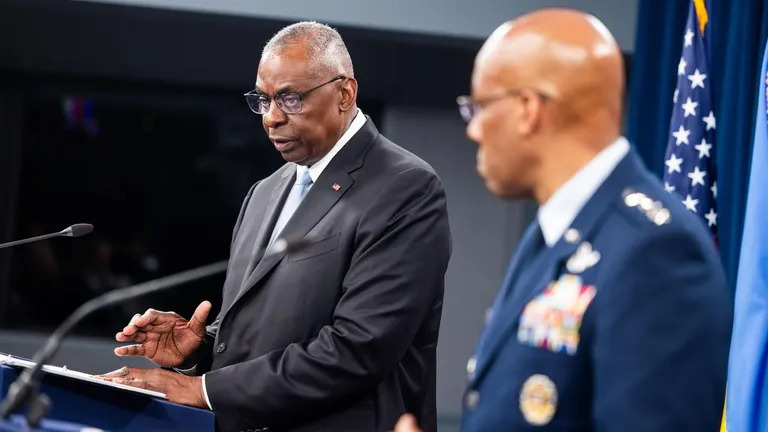
Member countries of the Ramstein Format have already provided Ukraine with USD 95 billion worth of military aid. Mr. Austin once again reiterated his belief that this support will change the situation on the battlefield: "We will continue providing significant security aid packages to Ukraine. You will see a constant flow of support to Ukraine from the US - week after week."
Will the Ukrainian Armed Forces be permitted to use U.S. supplied weapons for attacks on targets on Russian soil? The head of the Pentagon replied that the weapons are given primarily to hit nearby targets...
Meanwhile, the chairman of the Joint Chiefs of Staff of the USA, General Charles Brown clarified that, in the end, it is up to Ukraine to decide, but, as is a rule now, American suppled weapons are not to be used against long-range targets. Regarding the currently occupied Crimea Peninsula, Ukraine is fully empowered to target and engage enemy targets located there. (We note for that matter that Crimea is Russia’s territory, according to its constitution, and so, in legal terms, it is no different from Russia’s other federal entities such as Belgorod Oblast – Ed.)
However, answering questions about missile strikes, Brown assured that US-supplied ATACMS missiles were not used on Russian territory. Finally, Lloyd Austin was asked whether Ukraine would be able to shoot down with anti-aircraft missiles planes still flying over Russia.
"We made it very clear that Ukraine receives everything it needs for the protection of its sovereignty. I will leave the rest to the experts. Our expectations are that Ukrainians will continue to use weapons inside the country. But when we talk about the dynamics in the air, it can be different," he added.
WHAT THE ANNOUNCED AID PACKAGES FOR UKRAINE WILL CONTAIN
On May 10, the United States announced the allocation of a new military aid package worth USD 400 million to Ukraine. However, its content was not revealed at that time. Lloyd Austin said at Ramstein: "There will be more ammunition for NASAMS, for HIMARS, more armored fighting vehicles and other systems."
The head of the Pentagon reminded that the content of the USD 7 billion worth of security aid package had already been made public earlier: "We are also delivering what Ukraine urgently needs right now, especially 155-mm projectiles, and a lot more is on the way... We have to find ways for our aid to come continuously to further deter Russian aggression," Lloyd Austin added.
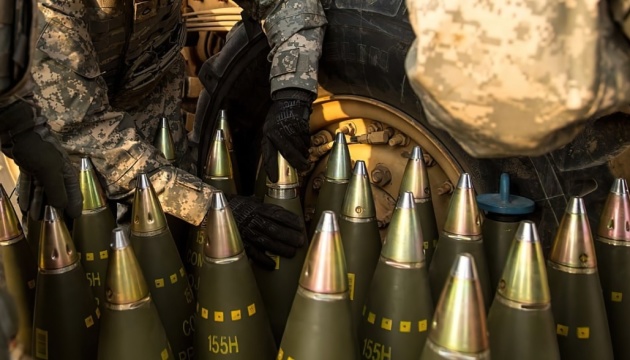
Spain is preparing a new military aid package for Ukraine, which includes the second batch of Leopard battle tanks, ammunition, including 155 mm projectiles, a new supply of Patriot anti-aircraft missiles, anti-drone systems, optical-electronic surveillance systems, and more.
Leopard tanks are expected to arrive in Ukraine in late June.
The Netherlands has committed to transfer a new batch of YPR-765 armored personnel carriers, which are the Dutch version of the American M113 APC. The exact number of the vehicles to be transferred has not yet been revealed (a total of approximately 2,100 such vehicles were produced, of which 500 were in service with the Dutch military). The delivery is expected "as soon as possible", as per the government of the Netherlands.
The Netherlands is reported to have delivered 207 YPR vehicles in different modifications to Ukraine so far.
"These types of armored combat vehicles are very much needed by Ukraine. They are highly maneuverable, help troops move faster, are equipped with the capabilities to perform reconnaissance, and can be used for both offensive and defensive roles. Remote-controlled weaponry provides additional security for the gunners," the Defense Minister, Kajsa Ollongren said.
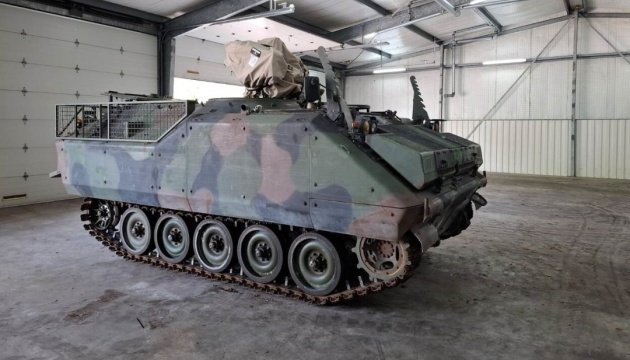
The German Ministry of Defense reported that at Ramstein, the partners agreed to support the German initiative aimed at bolstering Ukrainian air defenses. In particular, Belgium, Denmark, the Netherlands, Norway, and Canada have committed to finance relevant programs, while the USA, Great Britain, France, Spain, Romania, Belgium and Lithuania have committed to transfer equipment and interceptor missiles.
We will remind that Berlin had announced a new initiative back in April. Since then, it has become known that Germany will provide our country with a third Patriot air defense battery, the United States may provide one more, and the Netherlands and other allies have declared to be ready to purchase such systems for Ukraine.
Lithuania, for its part, has announced ready to dispatch its military instructors to Ukraine. The country’s Minister of Foreign Affairs, Gabrielus Landsbergis has said that "Lithuania is ready to join the coalition for the training of the Ukrainian military personnel, which is led by France among others."
But there is more to come.
Great Britain has already delivered 80 air defense missiles to Ukraine over the three weeks of May, and 20 more are to arrive by the end of the month.
"The world can't wait, Ukraine needs us to step up so they have everything they need to push Putin out," Defense Secretary Grant Shapps said in a message on the X social media platform.
Mr Shapps has published a full report on what Britain has handed over to Ukraine in May:
• 80 air defense missiles (another 20 will arrive by the end of May);
• more than 20 mine clearing systems;
• over 30 pallets of spare parts and anti-mine equipment;
• long-range reconnaissance drones;
• one million small arms ammunition;
• clothing for 4,000 military personnel;
• 20 Viking amphibious armored vehicles.
And even earlier, Sweden had committed to earmark EUR 28 million in funding for Ukraine. Of this amount, EUR 18 million will be transferred to coalitions within Ramstein, and EUR 10 million will be directed to the NATO fund for Ukraine.
Myroslav Liskovych. Kyiv

